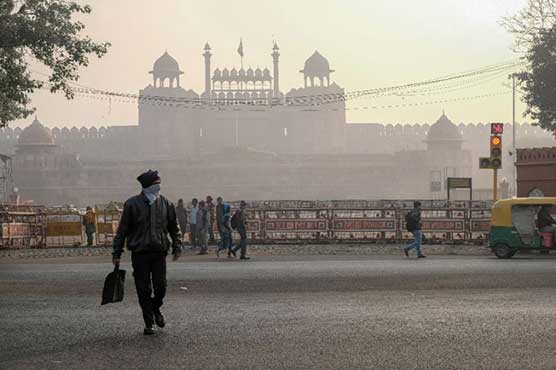Toiling in Delhi's toxic smog

People in the Indian capital still have to go about their daily lives.
NEW DELHI (AFP) - Delhi is the world’s most polluted major city, its toxic cocktail of vehicle fumes, dust and smoke choking the chaotic metropolis and taking years off its 20 million inhabitants’ lives.
But despite this, with levels of airborne pollutants routinely eclipsing safe limits in winter months, people in the Indian capital still have to go about their daily lives.
AFP spoke to four Delhi residents doing just that.
The choking boatman
Between October and March, people in Delhi flock to the Yamuna rivers, one of the world’s most noxious waterways, to feed migrating seagulls, believing it brings good karma.
Rowing them in his red wooden boat as the sun struggles to break through the haze to shimmer on the cold brown water is 24-year-old Ganesh Pandit.
"There is too much pollution here because of which there is smog. Phlegm gets stuck in the throat and it makes breathing tough," says Pandit, tossing out bits of bread to the squawking birds.
He adds: "When we take medicines, we feel better. When we stop taking the medicines, then problems start again. I always wake up with a headache. I have trouble rowing the boat."
The athlete
The Lodhi Gardens park, dotted with the atmospheric tombs of Islamic rulers of centuries past, is an oasis of calm and green, attracting Delhiites in their droves for sport or leisure.
Hopping over yellow training cones and shin-high green metal frames and scampering side-to-side in her pink trainers, is high school student Anaya Goel, a national-level badminton player.
"The pollution in Delhi has very adverse effects on my training and I don’t feel like coming out and training," the 17-year-old explains.
"After my training finishes, I feel a lot of nausea, headache and fatigue because of the pollution levels," she adds.
Sweeping the streets
Delhi’s Red Fort was constructed in the 17th century by a Mughal emperor and housing pavilions and ornamental gardens behind its imposing sandstone walls.
Outside toils Lajwanti, scooping up the city’s detritus into a rudimentary wheelbarrow as the traffic roars past, her only protection from the pollution is a thin crimson scarf to cover her nose and mouth.
"I come at 6:30 in the morning. My eyes burn, I cough often," the government employee reveals.
Pedalling in the pollution
Doctors warn against strenuous exercise -- which requires deeper breathing -- when the pollution spikes. But cycle rickshaw driver Munir Mohammad has no choice: He has to work.
"I get ill with fever, cold and cough. The medicine I take doesn’t really help," he says as he navigates Delhi’s roads on a three-wheeled vehicle with an antiquated heavy metal frame.
"I go to my village to get better and that is where I feel healthy. Here there is pollution with cars, diesel vehicles -- this is why we fall ill," he muses.

